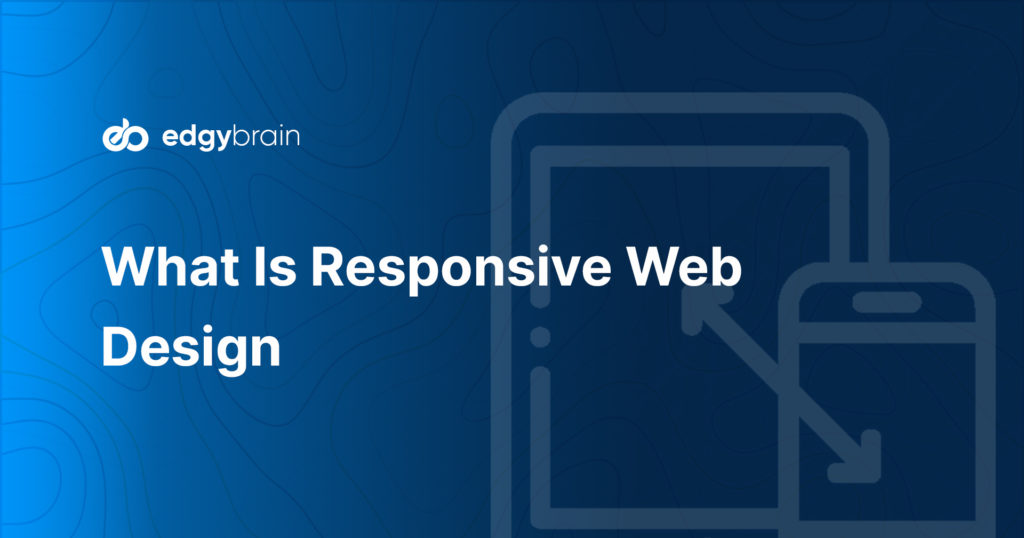Web Design
What Are Responsive Web Design Sites?
Table of Contents
Your responsive web design sites, whether they are for lead eCommerce or generation, must work ideally to convert effectively and cultivate customer interest. This means ensuring your website is engaging, loads fast, and is optimized for SEO because for years now, people have frequently been using phones to do their browsing — the fact that these devices are far more portable than desktops has made them a convenient shopping outlet as well.
Situations such as the COVID-19 pandemic also significantly influence how much you should prioritize your web appearance. Because purchasing in person has become hard and even unsafe for some, many consumers have switched to online shopping for their daily needs.
Search engines like Google have recognized the increased mobile traffic and the overall necessity for improved user experience. They have already started adjusting the way they rank websites. Tech companies also pump out device after device with differing resolutions and sizes, forcing websites to grow and accommodate the resulting variety.
You may be questioning, “How do I make sure my site design looks excellent on all devices and works well on mobile?” The answer is responsive web design sites and potentially the assistance of a responsive web design agency.
In this post, we’ll explain these key topics regarding responsive web design sites:
- What are responsive web design sites?
- How do responsive web design sites perform with SEO?
- Why should I consider responsive web design sites?
- How do I make my website responsive?
Let’s get started.
What Are Responsive Web Design Sites?
When we say a website is “responsive,” the design adjusts to the visitor’s screen size. Technically, the website server addresses the same HTML code to all devices and Common Command Set (CCS), automatically adjusting the layout and design to match the device’s resolution and size. All images, icons, and text automatically adjust to be the ideal size to ensure that each element is in place, usable and legible.
Why Are Responsive Web Design Sites So Important?
Now that we’ve responded to the “what is responsive web design” question, it’s time to investigate the “why.” Aside from the fact that many users use mobile to do their online shopping, there are many reasons why you should think about having a responsive website design:
Google Loves Responsive Web Design
Search engines have recognized just how important a good mobile experience is with the rise of mobile web browsing. Google crawls the mobile version of the content, basically prioritizing the mobile experience over the desktop. If your mobile site loads slow and the design does not fit properly according to the device size, it negatively affects user experience and SEO ranking. Your website could be way far in the search engine results pages (SERPs) only because your design is not responsive.
Responsive web design sites are paramount now, but future changes will further its value even more. Google had a significant ranking update in March 2021 called Core Web Vitals. It has set the expectations for what this means for responsive web design agencies and webmasters.
This update focuses completely on online user experience, so if your website is not user-friendly (responsive), it won’t compete in the highly competing online marketplace. If your site isn’t already responsive, you need to be proactive and make the needed changes now. Edgy Brain Marketing Agency is a responsive web design company that can help you if you can’t do this yourself.
Responsive Web Design Is Practical
Manually creating many versions of your website would be impossibly tedious and require hours of work. This page from Screensiz.es shows just how many devices and resolutions you’d have to adjust, and that list only shows mobile devices! A site that can automatically adapt to a large 17″ laptop, or the smallest 4″ mobile phone, is by far the most effective solution.
Responsive Web Design sites Are Timeless
Adopting responsive will save you time changing your site in the future. The rate at which companies release new devices is overwhelming, so assuring your design is responsive now means that your site can develop and adapt to new technology in the future.
How Do I Make My Website Design Responsive?
Now that we have discovered the benefits of responsive website design, how do we design it?
Using a meta viewport value width=device-width directs the browser to resize the page according to the screen size. The code will look like this:
<meta name=”viewport” content=”width=device-width, initial-scale=1.0″>Responsive Images
The CSS width property is set to 100%, and the image will scale up and down to make an image responsive
<img src=”new_img.jpg” style=”width:100%;”>Because this may cause the image to scale larger than its original size, it is preferable sometimes to use the max-width property.
<img src="new_img.jpg" style="max-width:100%;height:auto;">This will direct the image to scale smaller or larger depending on the screen size, but it won’t scale larger than the original screen size. This guarantees that the image remains clear.
Another option is instructing the browser to display various images to adapt to the viewer’s screen size. Here’s an example:
<picture>
<source srcset=”img_pingpong.jpg” media=”(max-width: 600px)”>
<source srcset=”img_basketball.jpg” media=”(max-width: 1500px)”>
<source srcset=”basketball.jpg”>
<img src=”img_pingpong.jpg” alt=”Flowers”>
</picture>Responsive Text
The text size can be fixed with a “viewport width” unit, or “vw”.
That way, the text size will adjust to the size of the browser window:
<h1 style=”font-size:10vw”>Good Morning</h1>
This information may only be effective if you have experience with website development and code. Sometimes the best course of action is to contact a responsive web design agency for guidance.
If Your Design Is Not Responsive, Users Can Miss Crucial Information
Whether you want your site users to fill out a form, subscribe to a service, buy a product, or be educated, strategically setting each element is important for conversions. Your website’s goal may vary, but ensuring a quality experience for your visitors is always advantageous because Google is actively watching your user experience. If an image is too small or cropped, your design can look unsuitable, negatively impacting visitors’ idea of your service or product.
If your call-to-action (CTA) button is not in the right place, or worse yet, isn’t there at all, it can dramatically harm your conversion rate. Edgy Brain is a responsive web design company with conversion rate optimization services as well, so if you think you need an expert evaluation regarding your website’s capacity to convert, don’t hesitate to reach out.





 Edgy Brain
Edgy Brain